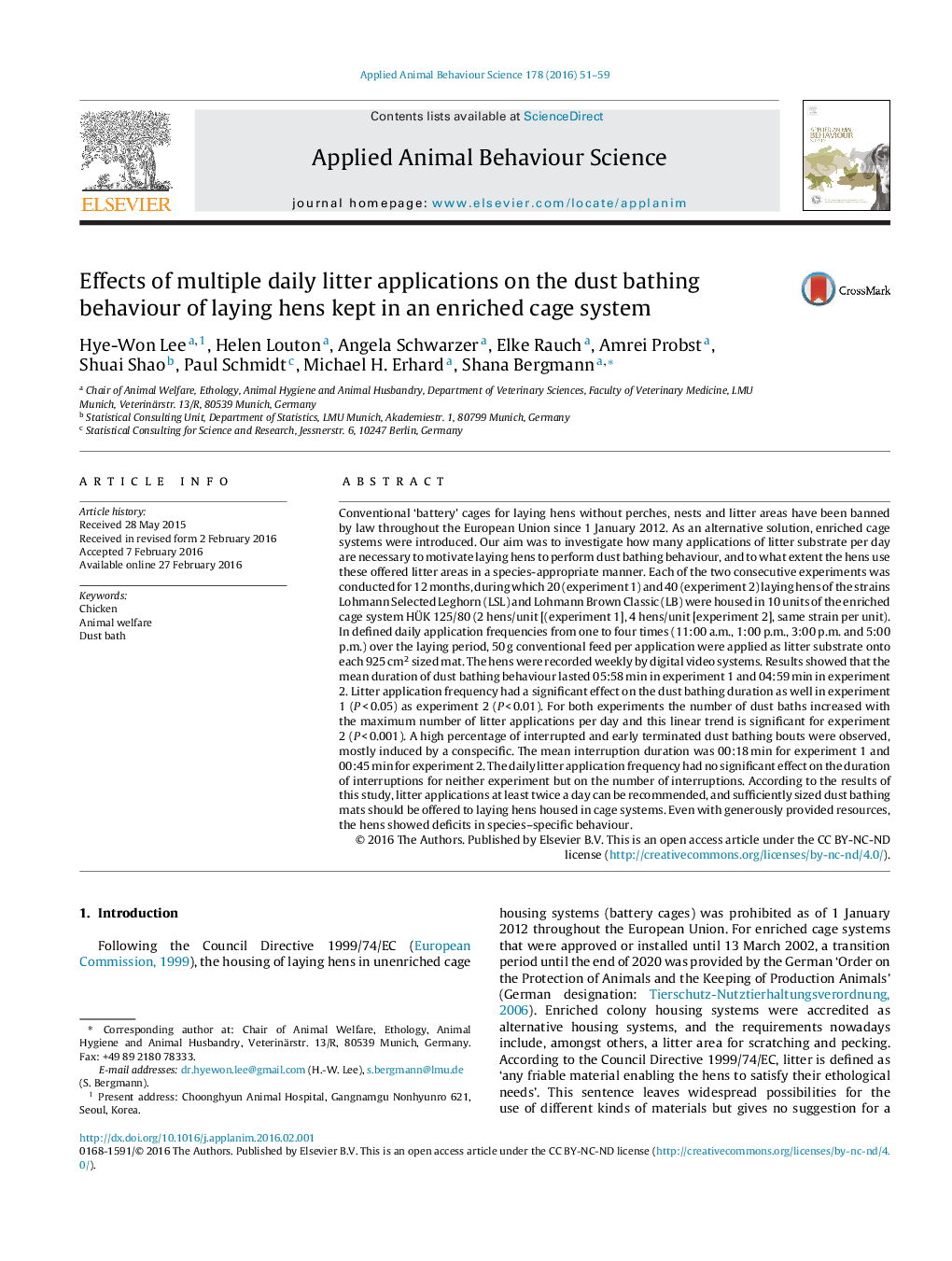| Article ID | Journal | Published Year | Pages | File Type |
|---|---|---|---|---|
| 6379401 | Applied Animal Behaviour Science | 2016 | 9 Pages |
Abstract
Conventional 'battery' cages for laying hens without perches, nests and litter areas have been banned by law throughout the European Union since 1 January 2012. As an alternative solution, enriched cage systems were introduced. Our aim was to investigate how many applications of litter substrate per day are necessary to motivate laying hens to perform dust bathing behaviour, and to what extent the hens use these offered litter areas in a species-appropriate manner. Each of the two consecutive experiments was conducted for 12 months, during which 20 (experiment 1) and 40 (experiment 2) laying hens of the strains Lohmann Selected Leghorn (LSL) and Lohmann Brown Classic (LB) were housed in 10 units of the enriched cage system HÃK 125/80 (2 hens/unit [(experiment 1], 4 hens/unit [experiment 2], same strain per unit). In defined daily application frequencies from one to four times (11:00 a.m., 1:00 p.m., 3:00 p.m. and 5:00 p.m.) over the laying period, 50Â g conventional feed per application were applied as litter substrate onto each 925Â cm2 sized mat. The hens were recorded weekly by digital video systems. Results showed that the mean duration of dust bathing behaviour lasted 05:58Â min in experiment 1 and 04:59Â min in experiment 2. Litter application frequency had a significant effect on the dust bathing duration as well in experiment 1 (PÂ <Â 0.05) as experiment 2 (PÂ <Â 0.01). For both experiments the number of dust baths increased with the maximum number of litter applications per day and this linear trend is significant for experiment 2 (PÂ <Â 0.001). A high percentage of interrupted and early terminated dust bathing bouts were observed, mostly induced by a conspecific. The mean interruption duration was 00:18Â min for experiment 1 and 00:45Â min for experiment 2. The daily litter application frequency had no significant effect on the duration of interruptions for neither experiment but on the number of interruptions. According to the results of this study, litter applications at least twice a day can be recommended, and sufficiently sized dust bathing mats should be offered to laying hens housed in cage systems. Even with generously provided resources, the hens showed deficits in species-specific behaviour.
Keywords
Related Topics
Life Sciences
Agricultural and Biological Sciences
Animal Science and Zoology
Authors
Hye-Won Lee, Helen Louton, Angela Schwarzer, Elke Rauch, Amrei Probst, Shuai Shao, Paul Schmidt, Michael H. Erhard, Shana Bergmann,
